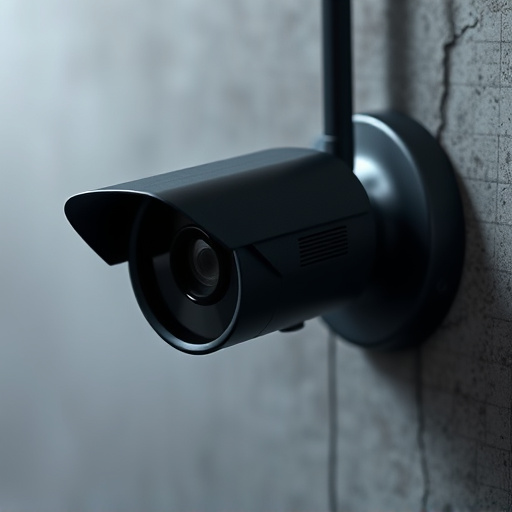Wireless hidden spy cameras have transformed surveillance with their discreet, flexible monitoring solutions that transmit footage via Wi-Fi, Bluetooth, or RF signals. Their compact design, high-definition resolutions, motion detection, and night vision make them suitable for diverse applications like home security, professional surveillance, and remote monitoring. While legally and ethically controversial, responsible use in legitimate contexts balances privacy concerns with enhanced security.
Uncover the world of wireless hidden spy cameras—a modern surveillance solution that offers unprecedented discretion and convenience. This comprehensive guide explores the intricacies of these advanced devices, from their key features and diverse applications to a step-by-step setup process. Discover how wireless technology transforms security, ensuring ethical use within legal boundaries. Whether for home, business, or personal monitoring, this article equips you with essential knowledge to leverage the power of a hidden spy camera wireless effectively and responsibly.
Understanding Wireless Hidden Spy Cameras: A Comprehensive Overview
Wireless hidden spy cameras have revolutionized surveillance technology, offering a discreet and versatile monitoring solution. These innovative devices operate by transmitting video footage wirelessly to a receiving unit or mobile device, eliminating the need for complex cable setups. The compact design of these cameras allows them to be easily concealed, making them an ideal choice for various purposes, from home security to professional surveillance.
Comprending their functionality involves grasping wireless transmission protocols and data encryption methods. Modern hidden spy cameras utilize Wi-Fi, Bluetooth, or dedicated radio frequency (RF) signals to beam footage, ensuring real-time monitoring and remote access via internet-connected devices. Additionally, high-definition resolutions, motion detection, and night vision capabilities enhance their effectiveness, providing clear images both day and night.
Key Features and Benefits of Wireless Technology in Hidden Cameras
Wireless hidden spy cameras have transformed surveillance by offering unparalleled convenience and flexibility. One of their key features is real-time remote access, allowing users to monitor activity from anywhere with an internet connection via dedicated apps. This means you can keep an eye on your home, office, or any other location discretely and effectively, even when you’re away.
Furthermore, these cameras often boast advanced functionalities like motion detection, night vision, and two-way audio, enhancing their surveillance capabilities. The wireless design also simplifies installation by eliminating the need for messy cable runs, making them ideal for hidden or hard-to-reach spots. This technology provides a level of discreetness and control that traditional wired systems simply can’t match, making wireless hidden spy cameras a popular choice for both personal and professional security needs.
Applications: Where and How to Use a Wireless Hidden Camera
Wireless hidden cameras, also known as hidden spy cameras, offer a diverse range of applications due to their compact size and remote accessibility. These versatile devices can be discreetly placed in various settings to capture footage without raising suspicion. Whether it’s for home security, monitoring pets or children, or professional surveillance, the wireless hidden camera has become an indispensable tool.
In residential settings, they are often used to deter burglaries or monitor entry points. Businesses utilize them for loss prevention, especially in retail stores and warehouses. Additionally, these cameras can be employed for remote monitoring of sensitive areas, such as server rooms or valuable collections. With their wireless capabilities, users can access live feeds or recorded videos from a mobile device, ensuring convenience and peace of mind.
Setting Up Your Wireless Hidden Spy Camera: Step-by-Step Guide
Setting up a wireless hidden spy camera involves a few simple steps, making it accessible for anyone to install and start monitoring. First, choose a suitable location for your camera—it could be anywhere with a clear view of the area you want to observe, such as a room, garage, or outdoor space. Ensure the spot has a stable internet connection for seamless wireless transmission.
Next, connect the camera to your home network by following the instructions provided by the manufacturer. This typically involves assigning it a unique network name (SSID) and setting a password to secure your connection. Once connected, access the camera’s app or software on your smartphone or computer to configure settings like resolution, recording schedule, and motion detection sensitivity. With these steps completed, you can now remotely monitor your chosen area through your device, making it an effective tool for security, surveillance, or even pet monitoring.
Legal Considerations and Ethical Use of Wireless Hidden Cameras
The use of wireless hidden cameras, also known as hidden spy cameras, raises significant legal and ethical concerns. It’s crucial to understand that the legality of using a hidden camera varies greatly depending on the jurisdiction. In many places, secretly recording conversations or capturing images of individuals without their knowledge is a violation of privacy laws and can lead to severe legal consequences. Even in regions with less stringent regulations, there are often restrictions on where and how such devices can be deployed.
Ethically, the use of hidden spy cameras should be approached with great care. They have legitimate applications in security, surveillance, and investigative journalism; however, their misuse can infringe upon personal privacy and foster a culture of distrust. It’s essential for users to be transparent about the presence of these devices whenever possible and to only deploy them in situations where the benefits outweigh the potential harm.
